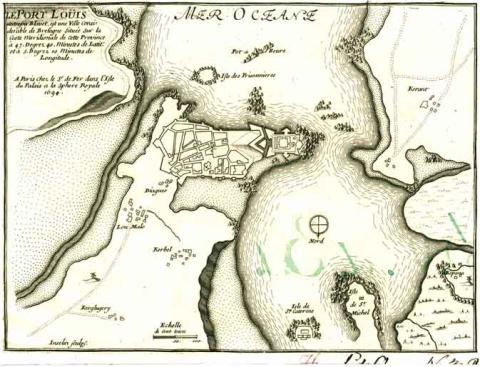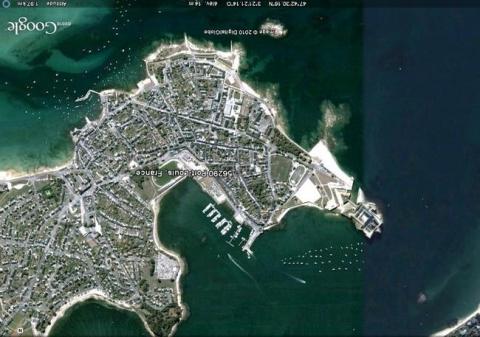Port-Louis
History and description
A town of medieval origin, Port-Louis, which was originally called Blavet, had its first modern fortifications built in the 1590s, when the Spanish took over to confront Henri IV of France and Elizabeth I of England. Don Juan del Aquila constructed a quadrangular bastioned fort there: the fort de l’Aigle. This fort was besieged and taken by the French in 1598. Henri IV planned to dismantle the whole place but Louis XIII preserved and reconstructed it. The fort was rechristened Saint-Louis and had sea bastions built in 1622, while an urban wall was established midway through the 17th century. The town was renamed Port-Louis. The citadel is in the form of a square with seven bastions, four of which orillon type, and preceded by a ravelin and other advanced works. The urban wall includes three full bastions on its land-facing fronts.In 1683, Vauban visited the site. His opinion regarding the citadel and the urban wall was very negative, but he considered that the site itself compensated for the weakness of the port defences, which had become the arsenal of the East India Company, created by Colbert in 1664. Thus, he limited the scope to the creation of a powder keg sealed within a wall, an arsenal, echauguettes and rebuilding the pediment of the main gate of the citadel. The ravelin of Louis XIII was replaced by the current example.
Current state
The citadel and the set of ramparts still exist. The citadel houses the musée national de la Marine (National Maritime museum) and the musée de la Compagnie des Indes (East India Company museum). The urban wall is freely accessible. Port-Louis is relatively insignificant in terms of Vauban, and is more an example of a marine stronghold under Louis XIII.
Port-Louis
Port-Louis
47° 42' 32.6848" N, -3° 22' 10.5218" E
Type
urban wall and citadel
Department
Morbihan
Region
Bretagne
Bibliography
- FAUCHERRE (N.) et LECUYER (G.), La route des fortifications en Bretagne Normandie, Paris, 2006, éd. Huitième Jour, coll. Les étoiles de Vauban. Vauban et ses successeurs sur les côtes de la Manche, Paris, 2003.

